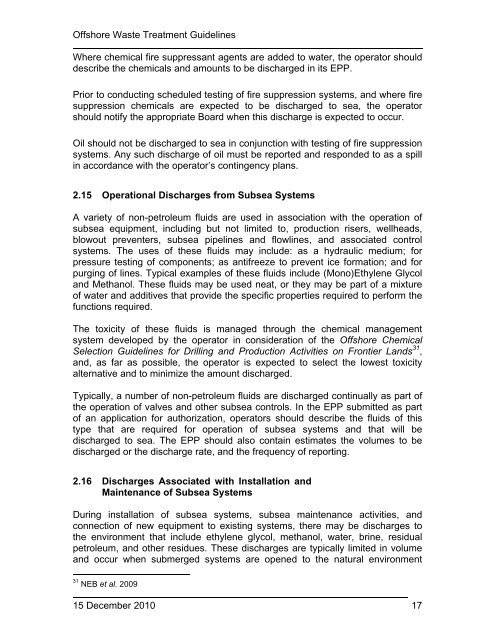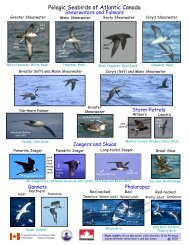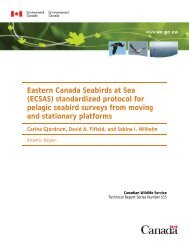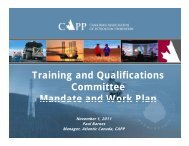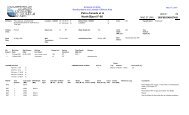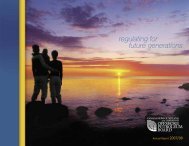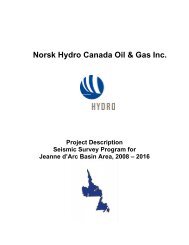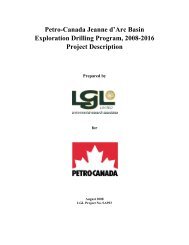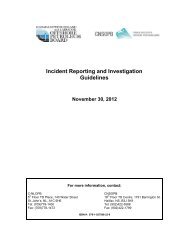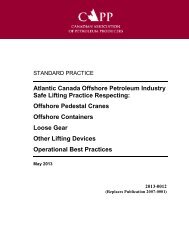Offshore Waste Treatment Guidelines - Canada-Nova Scotia ...
Offshore Waste Treatment Guidelines - Canada-Nova Scotia ...
Offshore Waste Treatment Guidelines - Canada-Nova Scotia ...
Create successful ePaper yourself
Turn your PDF publications into a flip-book with our unique Google optimized e-Paper software.
<strong>Offshore</strong> <strong>Waste</strong> <strong>Treatment</strong> <strong>Guidelines</strong>Where chemical fire suppressant agents are added to water, the operator shoulddescribe the chemicals and amounts to be discharged in its EPP.Prior to conducting scheduled testing of fire suppression systems, and where firesuppression chemicals are expected to be discharged to sea, the operatorshould notify the appropriate Board when this discharge is expected to occur.Oil should not be discharged to sea in conjunction with testing of fire suppressionsystems. Any such discharge of oil must be reported and responded to as a spillin accordance with the operator’s contingency plans.2.15 Operational Discharges from Subsea SystemsA variety of non-petroleum fluids are used in association with the operation ofsubsea equipment, including but not limited to, production risers, wellheads,blowout preventers, subsea pipelines and flowlines, and associated controlsystems. The uses of these fluids may include: as a hydraulic medium; forpressure testing of components; as antifreeze to prevent ice formation; and forpurging of lines. Typical examples of these fluids include (Mono)Ethylene Glycoland Methanol. These fluids may be used neat, or they may be part of a mixtureof water and additives that provide the specific properties required to perform thefunctions required.The toxicity of these fluids is managed through the chemical managementsystem developed by the operator in consideration of the <strong>Offshore</strong> ChemicalSelection <strong>Guidelines</strong> for Drilling and Production Activities on Frontier Lands 31 ,and, as far as possible, the operator is expected to select the lowest toxicityalternative and to minimize the amount discharged.Typically, a number of non-petroleum fluids are discharged continually as part ofthe operation of valves and other subsea controls. In the EPP submitted as partof an application for authorization, operators should describe the fluids of thistype that are required for operation of subsea systems and that will bedischarged to sea. The EPP should also contain estimates the volumes to bedischarged or the discharge rate, and the frequency of reporting.2.16 Discharges Associated with Installation andMaintenance of Subsea SystemsDuring installation of subsea systems, subsea maintenance activities, andconnection of new equipment to existing systems, there may be discharges tothe environment that include ethylene glycol, methanol, water, brine, residualpetroleum, and other residues. These discharges are typically limited in volumeand occur when submerged systems are opened to the natural environment31 NEB et al. 200915 December 2010 17


